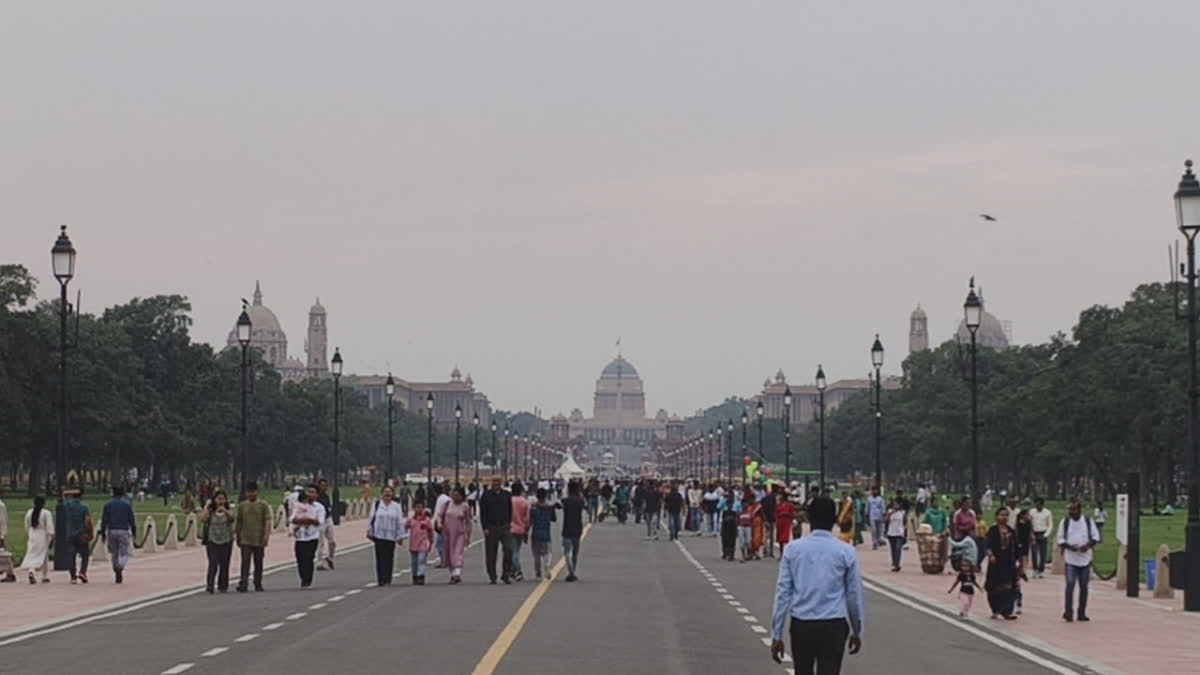New Delhi: After the air quality in the national capital reached an all-time low and was recorded in the "very poor category" on Sunday afternoon, vehicle-mounted 'anti-smog guns' were used to spray water and reduce air pollution in the metropolitan city. The Delhi government has armed itself with anti-smog guns (ASGs) to combat pollution. ASG was first tested back in 2017. Since then, many have been installed at key locations.
Air contaminants are floating due to the changing weather, and ASG workers report "burning sensations in eyes and nose". Residents also feel smothered by the ominous smog.
Speaking about the pollution control measure, Sanjeev, the supervisor of anti-smog gun work said, "We operate the anti-smog guns four to five times a day so that there is no inconvenience to the passers-by. This prevents dust from rising in the air and spreading. We can sense a change in the air. The weather has changed and we can sense a burning sensation in our eyes and nose."
The anti-smog guns are used to spray water to settle dust in areas with poor air quality. Environmentalists question their efficacy, but officials say they are a temporary measure for quick relief. The overall air quality in Delhi was recorded at 302 on Sunday afternoon, as per data from SAFAR-India.
In the morning, the overall air quality was recorded in the 'poor category' with an AQI of 266 against 173 recorded on Saturday. According to the latest data from the System of Air Quality and Weather Forecasting and Research (SAFAR), the air quality around Delhi University was recorded at 330 (very poor) at noon, while IGI Terminal T3 in New Delhi was at 313 against 276 in the morning hours.
The air quality in the national capital on Friday morning was recorded in the 'moderate' category with an Air Quality Index (AQI) of 149. The overall AQI has increased from 83 on Wednesday to 117 on Thursday. The Air Quality Index is a tool for effective communication of air quality status to people in terms that are easy to understand. There are six AQI categories, namely Good + Satisfactory, Moderately Polluted, Poor, Very Poor, and Severe.
Each of these categories is decided based on the ambient concentration values of air pollutants and their likely health impacts (known as health breakpoints). According to the AQI scale, the air quality check between 0 and 50 is "good", 51 and 100 "satisfactory", 101 and 200 "moderate", 201 and 300 "poor", 301 and 400 "very poor", and 401 and 450 "severe". (ANI)



